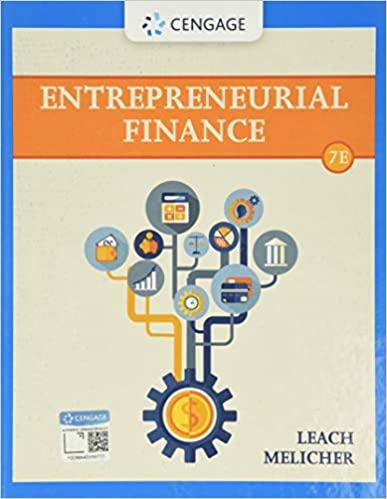Question
As a new Investment Analyst for Burt & Brommer (B&B) Capital Management, Inc., you are asked to estimate the mean, variance, standard deviation of returns
As a new Investment Analyst for Burt & Brommer (B&B) Capital Management, Inc., you are asked to estimate the mean, variance, standard deviation of returns for FedEx (FDX) common stock. You have obtained the following actual annual rates of return for the previous fourteen-years for both FedEx stock and the (NYSE):
| Year | FDX (%) | Market (%) | (FDX-Mean)(Market-Mean) | ||
| 2020 | 71.67 | -2.01 | -491.77 | ||
| 2019 | -27.74 | 5.46 | 31.24 | ||
| 2018 | 0.56 | 7.7 | -16.79 | ||
| 2017 | 26.68 | 28.91 | 330.64 | ||
| 2016 | 7.06 | 3.75 | 12.55 | ||
| 2015 | -3.88 | -2.12 | 133.60 | ||
| 2014 | 25.33 | 8.11 | 24.70 | ||
| 2013 | 15.04 | 9.87 | 10.69 | ||
| 2012 | 11.93 | 4.29 | 0.32 | ||
| 2011 | -2.68 | 6.78 | -7.91 | ||
| 2010 | 123.17 | 57.05 | 5643.39 | ||
| 2009 | -50.49 | -45.24 | 3222.00 | ||
| 2008 | -25.07 | -3.86 | 375.50 | ||
| 2007 | -2.29 | 8.73 | -35.75 | ||
| Mean | ______ | 6.244286 | SUM | 9232.39 | |
| Variance | ______ | 463.2035 | COV | _______ | |
| Std.Dev. | ______ | 21.52216 | BETA | _______ |
- Using Excel, calculate the mean, variance and Standard Deviation for FedEx stock. The Market Index values are given above.
FDX
Mean _______%
Variance _________
Std. Dev _______%
- Using Excel, calculated the covariance for FedEx stock with the NYSE Index: Covariance = _________
After using Excel to calculate the covariance of FedEx Corporation stock returns with the Market Index, what is FDXs correlation with the market and its beta () using the covariance?
Correlation = ________________ = 0._______
Beta () = _________________ = ________
- Using Regression under Data in Excel, the y axis is FDX percentage returns and the x axis is the Market percentage returns. Copy and paste (as a picture) the regression output below. From the Regression output, what is the Beta for FDX Corporation stock?
Beta () = __________
You are an intern at FedEx Corporation and the CFO, Mr. Grayson House, has asked you to estimate the growth rate and cost of equity capital (retained earnings) for the firm. Each FDX stock is expected to pay a dividend (D1) of $2.60 a share next year. You estimated the beta above in problem# 1. The risk-free rate is estimated as the yield on nominal 10-year US Treasury bonds is 0.88%. See: https://www.treasury.gov/resource-center/data-chart-center/interest-rates/Pages/TextView.aspx?data=yield and the market risk premium [rM rrf] is 5.5%. FedExs dividend is expected to grow at the same constant rate, g, forever. The stock currently sells for $259.47 per share. Assuming the market is in equilibrium, where both the CAPM and DCF model should result in the same expected rate of return.
- What is the firms estimated cost of equity capital for retained earnings (rs) and what is its implied growth rate (g)?
Remember: rs = rrf +[rM-rrf]=_0.88% +[5.5%]1.53 = _______%
and P0 = D1 /(rs g).
g = rs - D1/P0 = = ____________%
- Given average returns for the previous 14 years, is FedEx Corporation common stock underpriced or overpriced?
As a measure of FDXs current cost of new issue debt, FDX Corp issued new long-term, BBB (S&P) bonds on October 17, 2018 of $850,000,000 par value with a coupon rate of 4.950% (paid semiannually) that will mature on October 17, 2048. At the current price of 111.250 percent of par value, this equals an annual yield of 4.06%. You may use this bond issue to estimate FDXs cost of new issue, 30-year maturity debt. What is FDXs after tax cost of the new debt assuming a 26 percent income tax rate? Remember: After-tax cost = before-tax cost (1-tax rate).
Data obtained from: https://www.investopoli.com/en/bonds/fedex-us31428xbs45/
After-tax cost debt = = ___________%
Given the after-tax cost of new FDX 30-year bonds calculated in the previous problem and that FDX has $36.120 Billion of Debt and its most recent market value of equity is 68.135 Billion, (total value of debt plus equity of $104.255 Billion) its debt/equity ratio is 0.530, which converts to its current capital structure is 34.7% debt (Debt/Total Asset ratio is 34.7%) and 65.3% equity, what is the weighted average cost of capital (WACC) for FDX given the cost of debt and equity capital calculated above? FDX has no preferred stock. Remember:
WACC = wd *(before-tax cost of debt)*(1-tax rate) + ws *cost of equity
WACC = = _____________%
Step by Step Solution
There are 3 Steps involved in it
Step: 1

Get Instant Access to Expert-Tailored Solutions
See step-by-step solutions with expert insights and AI powered tools for academic success
Step: 2

Step: 3

Ace Your Homework with AI
Get the answers you need in no time with our AI-driven, step-by-step assistance
Get Started


